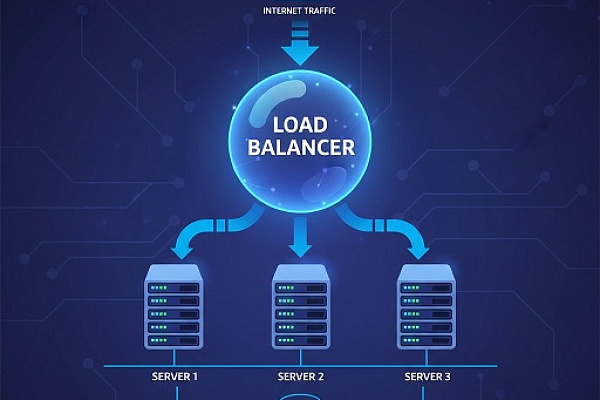Containerized Data Centers represent a revolutionary method for organizing computing resources that fundamentally changes traditional IT infrastructure paradigms. Unlike conventional data centers requiring capital construction and lengthy commissioning periods, containerized solutions offer unprecedented deployment flexibility and speed.
Key Benefits of Containerized Data Centers
-
Deployment in 4-12 weeks compared to 6-24 months for traditional facilities
-
30-50% lower capital expenditures by eliminating construction costs
-
Exceptional energy efficiency with PUE ratings of 1.1-1.3 through optimized cooling
-
Operational resilience in extreme temperatures (-40°C to +50°C)
-
Flexible acquisition through purchase or rental options
Historical development
The containerized data center concept originated in the mid-2000s when technology companies required rapid computing capacity expansion. The pioneering solution came from Sun Microsystems, which introduced Project Blackbox in 2006 - the first commercial data center housed in a standard 20-foot shipping container capable of accommodating 250 servers. This innovative approach attracted immediate industry attention by offering turnkey solutions deployable in weeks rather than the months or years required for traditional data center construction.
Google advanced the technology by developing mobile data centers that enabled rapid global infrastructure expansion. A notable implementation occurred in Finland, where containerized units installed in a repurposed paper mill utilized seawater for cooling, demonstrating exceptional deployment flexibility.
Microsoft subsequently pushed boundaries with Project Natick, submerging container data centers underwater. This initiative not only validated the technology's reliability in extreme conditions but also explored innovative natural cooling methods. Cloud4Y further refined containerized data center designs, optimizing them for energy efficiency and domestic market requirements.
Technical architecture
The foundation of a containerized data center is a modified ISO-standard shipping container (typically 20 or 40 feet in length) transformed into a fully autonomous computing environment. These modules contain complete infrastructure systems ready for immediate operation upon connection to power and network resources.
Core System Components:
-
High-density server racks supporting up to 15kW per rack (versus 6kW in conventional data centers)
-
Advanced cooling solutions including liquid and immersion cooling technologies
-
Comprehensive power systems combining UPS units, diesel generators, and modern battery arrays
-
High-performance networking supporting speeds up to 400Gbps
-
Robust environmental protection meeting IP55 standards for dust/water resistance
Features of a containerized data center
A containerized data center has a service life comparable to that of traditional data centers. The key advantage is the ability to relocate and modernize equipment without significant building repairs. At the end of its service life, a container can be completely re-equipped, significantly extending its useful life.

The economic benefits are clear when considering the total cost of ownership. Initial investments are reduced by 30-50% compared to traditional data centers. High energy efficiency also significantly lowers operating costs. The modular design allows for precise matching of current needs, avoiding the excess capacity typical of traditional data centers.
As for the environmental impact, containerized solutions demonstrate impressive results. The Power Usage Effectiveness (PUE) index in modern modular data centers typically ranges from 1.1 to 1.3, compared to traditional data centers, which have PUE values of 1.5 to 2.0. This improvement is achieved through optimized cooling systems and compact equipment arrangement that minimizes energy waste.
Comparison with traditional data centers
| Criterion | Containerized Data Center | Traditional Data Center |
| Deployment Time | 4–12 weeks | 6–24 months |
| Power Density | Up to 15 kW/rack | 6 kW/rack |
| Mobility | Fully mobile | None |
| Lifespan | 7–10 years | 10–15 years |
| Total Cost of Ownership | $8–12k per kW | $15–25k per kW |
| Energy Efficiency (PUE) | 1.1–1.3 | 1.5–2.0 |
The technological advantages of containerized data centers open up new possibilities for various industries. In the telecommunications sector, they enable rapid infrastructure deployment in remote areas. For industrial enterprises, these solutions offer the ability to place computing power directly at production sites. Scientific organizations use mobile data centers for field data processing — from Arctic stations to oceanographic vessels.
Operational characteristics
The future development of containerized data centers is linked to further miniaturization of equipment, improved energy efficiency, and the advancement of autonomous power systems. Efforts are already underway to develop fully non-volatile modules that can operate for years in remote areas without external power. Another area of development is the creation of customized containers for artificial intelligence (AI) and machine learning applications that require specialized cooling and energy management.
Implementing container solutions needs careful planning. You have to consider the local climate, utility access, and safety requirements. The monitoring system deserves special attention; it should offer round-the-clock monitoring of all essential equipment parameters. For long-term projects, it is crucial to plan for scalability — adding new containers as your computing needs increase.
Key considerations for selecting a containerized data center
Choosing a containerized data center requires thorough evaluation of both technical specifications and vendor qualifications. Prioritize providers with demonstrated experience in projects matching your scale and complexity; ensure they have international certifications (particularly ISO/IEC 22237 compliance).
Another important aspect to consider is the geographical availability of the supplier's service centers. Having offices in your area will ensure that any issues can be addressed promptly. It is also worth considering the level of technical support. Ensure that there is 24/7 monitoring and a guaranteed response time is included in the service agreement.
Evaluate the company's market longevity and completed project portfolio. Choose vendors with in-house manufacturing capabilities. Review maintenance agreements and upgrade policies.
Key considerations when placing an order
Technical Specifications
The equipment requirements should clearly define:
-
Server rack density (kW per rack)
-
Redundancy levels for power and cooling systems
-
Environmental operating conditions (temperature/humidity ranges)
Cooling system note: Immersion cooling requires specialized maintenance protocols, while air cooling may prove inefficient in hot climates.
Contractual Terms
The agreement must explicitly outline:
-
Delivery, installation, and commissioning procedures
-
Mandatory acceptance testing protocols (measuring energy consumption, noise levels, etc.)
-
Minimum 5-year warranty with defined component replacement processes
Logistics Planning
Critical transportation factors:
-
Route feasibility for intact container delivery (no disassembly required)
-
Prepared installation site meeting manufacturer specifications
-
Foundation engineering accounting for fully loaded container weight and additional structural safety margin.
Common implementation pitfalls
Underestimating site preparation requirements remains one of the most frequent mistakes in container data center deployment. Improperly leveled foundations or incorrect orientation can lead to cooling inefficiencies and vibration issues. Failing to account for snow and wind loads in northern regions may compromise structural integrity.
Many projects fail due to inadequate monitoring systems. Without leak detectors, coolant purity sensors, or battery monitoring, operational risks increase.
Another common problem is not planning for future growth. Even if you start with a small number of containers, you need to think ahead and set aside space, power, and internet connections for more containers later. It's also important to train your team to deal with emergencies, fix the cooling system, and work safely in the containers. Don't forget about rules and regulations, especially in cities or nature areas where you might need special permission.
Industry Outlook
Containerized data centers have transitioned from experimental solutions to mainstream technology adoption. Their market share in infrastructure solutions continues to grow, and the scope of application is expanding to new industries. Industry analysts project that by 2027, 20% of new data center deployments will utilize containerized solutions, reflecting a fundamental shift in infrastructure deployment strategies.



